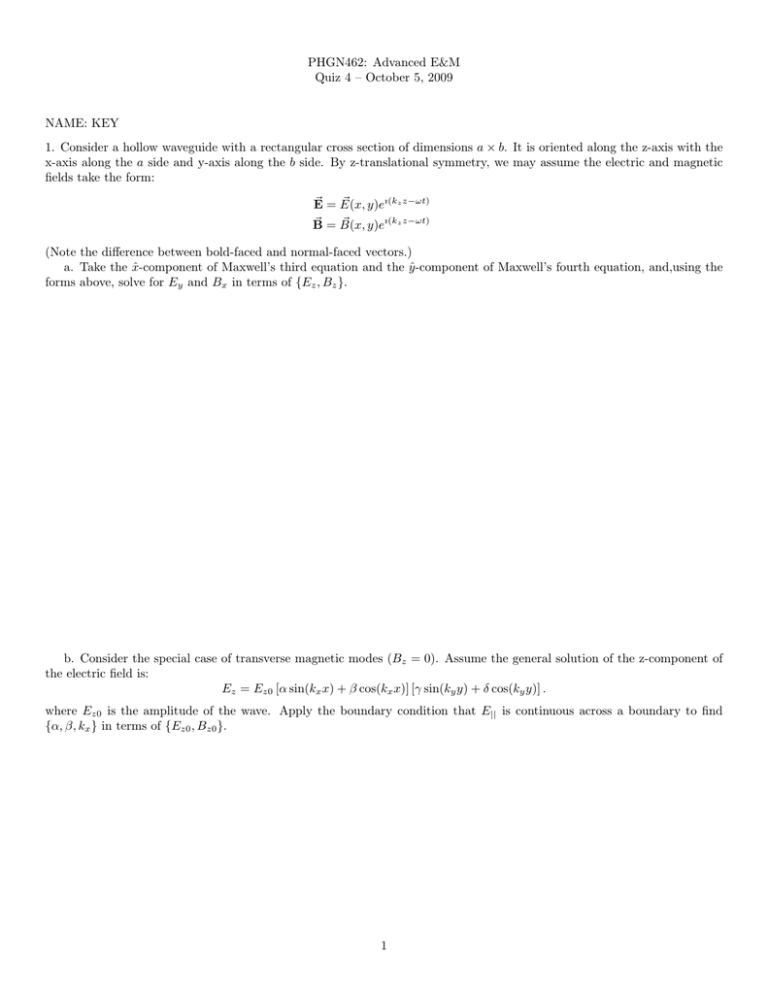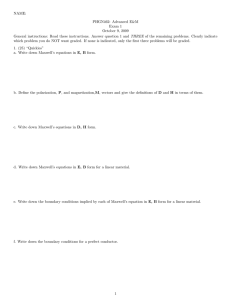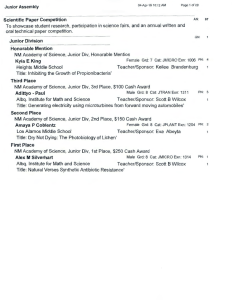PHGN462: Advanced E&M Quiz 4 – October 5, 2009 NAME: KEY
advertisement

PHGN462: Advanced E&M
Quiz 4 – October 5, 2009
NAME: KEY
1. Consider a hollow waveguide with a rectangular cross section of dimensions a × b. It is oriented along the z-axis with the
x-axis along the a side and y-axis along the b side. By z-translational symmetry, we may assume the electric and magnetic
fields take the form:
~ = E(x,
~
E
y)eı(kz z−ωt)
~ = B(x,
~
B
y)eı(kz z−ωt)
(Note the difference between bold-faced and normal-faced vectors.)
a. Take the x̂-component of Maxwell’s third equation and the ŷ-component of Maxwell’s fourth equation, and,using the
forms above, solve for Ey and Bx in terms of {Ez , Bz }.
b. Consider the special case of transverse magnetic modes (Bz = 0). Assume the general solution of the z-component of
the electric field is:
Ez = Ez0 [α sin(kx x) + β cos(kx x)] [γ sin(ky y) + δ cos(ky y)] .
where Ez0 is the amplitude of the wave. Apply the boundary condition that E|| is continuous across a boundary to find
{α, β, kx } in terms of {Ez0 , Bz0 }.
1







